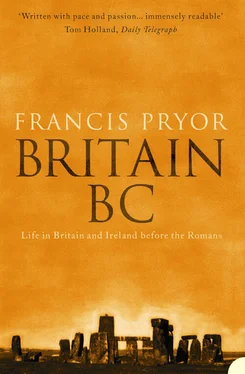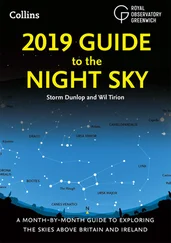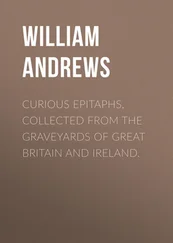If one accepted Lyell’s idea of uniformity, it became impossible to deny that the extinct animal bones and the flint tools found by Boucher de Perthes were in existence at precisely the same time – and a very long time ago. By the mid-nineteenth century, Palaeolithic archaeology was on something of a popular roll. No educated household could afford to ignore it. John Lubbock’s book Pre-Historic Times (1865) became a best-seller. Indeed, it was so popular that it’s still possible to pick up a copy quite cheaply. Mine is the fifth edition of 1890, and it cost me a fiver in 1980. It introduced the word ‘prehistory’ to a general audience, albeit with a hyphen, and it didn’t stop short at the Palaeolithic (or Old Stone Age). Lubbock also discussed the later Ages with considerable learning and not a little gusto. I find his enthusiasm infectious, and it isn’t surprising that some of his other books had titles such as The Pleasures of Life (in two volumes, no less). Like many of his contemporaries, Lubbock was able to turn his hand to subjects other than archaeology: his other works include books on insects and flowers aimed at both popular and scientific readers. He was a diverse and extraordinary man.
The first three chapters of this book will be about the earliest archaeological period, the Palaeolithic, or Old Stone Age. The archaeologists and anthropologists who study the Old Stone Age are grappling with concepts of universal, or fundamental, importance. What, for example, are the characteristics that define us as human beings? When and how did we acquire culture, and with it language? Let’s start with the first question; we can deal with the next one in the chapters that follow. I’ll begin by restating it in more archaeological terms: when and where did humankind originate?
The study of genetics has been transformed by molecular biology, but it isn’t always realised just how profound that transformation has been. 2 I studied these things in the 1960s, as an undergraduate at university, where I learned that human beings and the great apes were descended from a common ancestor over twenty million years ago. But molecular science has shown this to be wrong. For a start, the time-scale has been compressed, and it is now known that mankind and two of the African great apes, the chimpanzee and the bonobo (a species of pygmy chimp found in the Congo basin), 3 share a common ancestor who lived around five million years ago. However, you have to go back thirteen million years to find a common ancestor for man and all the great apes, which include the orang and the gorilla.
There is now a growing body of evidence to suggest that recognisably human beings had evolved in Africa over two and a half million years ago. By ‘recognisably human’ I mean that if one dressed an early hominid, such as Homo rudolfensis (named after a site near Lake Rudolf in Kenya), in a suit and tie, and gave him a shave and a haircut he would, as the old saying goes, probably frighten the children, but not necessarily the horses, should he then decide to take a stroll along Oxford Street. His gait and facial appearance would certainly attract strange looks from those too ill-bred to conceal them; but such frightened sidelong glances aside, he might just be able to complete his shopping unmolested. His appearance in modern clothes would not be as undignified and inappropriate, for example, as that of those poor chimpanzees who until very recently were used to advertise teabags; he was no Frankenstein’s monster. He died out less than two million years ago, and his place was immediately taken by other hominids, including the remarkable Homo erectus, a late form of whose bones were found at a site in Italy dating to a mere 700,000 years ago. 4 If Homo erectus took a stroll along Oxford Street, his appearance would attract far less attention than Homo rudolfensis, even if his size and stature would cause most men to step respectfully aside.
When I was a student, the descent of man (people were less twitchy then about using ‘man’ to mean ‘mankind’) was seen as essentially a smooth course, with one branch leading naturally to another. More recently it has become clear that the development actually happened in a more disjointed fashion, with many more false starts and wrong turnings along the way. We now realise that our roots don’t mimic those of a dock or a dandelion, with a single strong central taproot, but are more like those of grasses and shrubs, with many separate strands of greater or lesser length.
The dating of these early bones and the rocks in which they are found depends on various scientific techniques, but not on radiocarbon – more about which later – which is ineffective on samples over about forty thousand years old. Palaeolithic archaeology relies more on the dating of geological deposits, or the contexts in which finds are made, than in dating the finds themselves, as is frequently the case in later prehistory. This often means that dates are established by a number of different, unrelated routes, and that in turn leads to a degree of independence and robustness. So it is possible to say, for example, that early hominids had begun to move out of Africa and into parts of Asia about 1.8 million years ago. When did they move into Europe? That is a very vexed question, involving many hotly disputed sites, dates and theories. But it is probably safe to suggest that man appeared in Mediterranean Europe somewhere around 800,000 years ago, but did not reach northern Europe and the place that was later to become the British Isles until just over half a million years ago.
The most probable reason why there was so long a delay is relatively simple, and has to do with the European climate, which was far less hospitable than that of Africa. It has been suggested that wild animals may have acted as another disincentive, but I find that less plausible: why should European animals have been so very much more fierce than those of Africa? We should also bear in mind that conditions in Europe are less favourable to the survival of archaeological sites than are those in Africa. There is more flowing water around – rivers ceaselessly wear away at their banks; there is a disproportionately larger coastline; and of course there are vastly more people, whose towns, roads and farmlands must have buried or destroyed many Palaeolithic sites. And these very early sites aren’t easy to spot. Unlike the settlements of later prehistory, there’s no pottery, and stone tools are both remarkably rare and easily overlooked, having frequently been stained earthy colours because of their great age. All this suggests that it’s not entirely impossible that the million-year ‘gap’ between the original move out of Africa and the subsequent colonisation of Europe may be more apparent than real.
As the term Old Stone Age implies, stone was the main material from which tools were made. Having said that, there is evidence for wooden spears, and bone was certainly used and fashioned. But for present purposes I want to concentrate on stone, and particularly on flint. Most of the flint found in northern Europe formed in the geological Upper Cretaceous Period (one hundred to sixty-four million years ago), usually at the same time as the chalk. When it formed, the chalk was a deep, lime-rich mud on the seabed. In it are countless fossils, including the bones of marine dinosaurs, but more often one finds straight and spiral shells of squid-like creatures, which must have been extraordinarily abundant. Flint is found in the chalk both as nodules, which are often rounded and knobbly (to my mind they closely resemble Henry Moore sculptures), and as a near-continuous tabular deposit which was mined in later prehistory at places such as Grimes Graves in Norfolk (see Chapter 6). It is also frequently found in much later Ice Age gravels, which are composed of stones that have been worn down from much earlier rocks, including the chalk. It’s probably fair to say that most prehistoric flint tools in Britain were made from flint pebbles found in gravel deposits at or close to the surface.
Читать дальше












